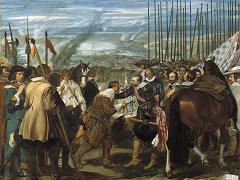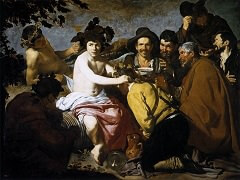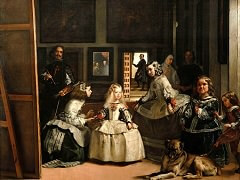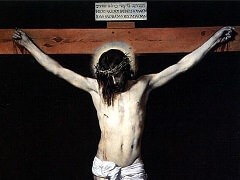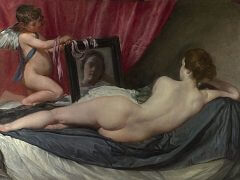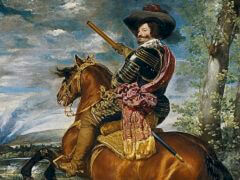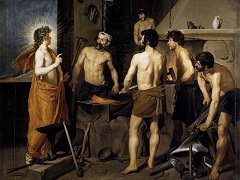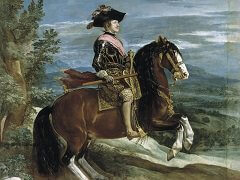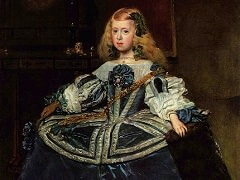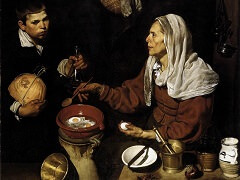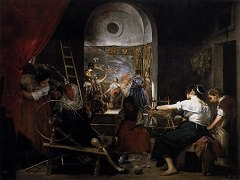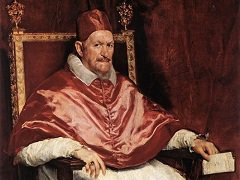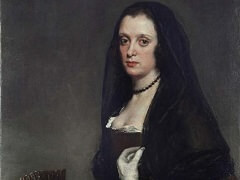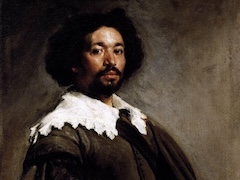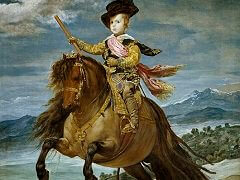Kitchen Maid with the Supper at Emmaus, 1617 by Diego Velázquez
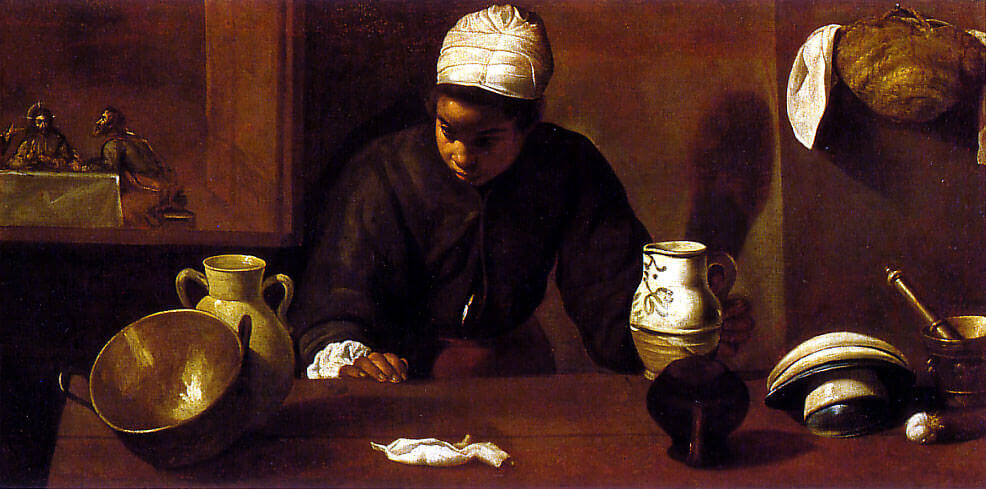
Velázquez trained for approximately six years in Francisco Pacheco's studio, a meeting place for intellectuals. In 1618 he married Pacheco's daughter.
Velázquez was influenced by Pacheco, and by the early naturalism of artists such as Pedro de Campagna and Juan de Roelas. However, probable contacts with works by some of the followers of Caravaggio, such as Bartolomeo Cavarozzi, should not be underestimated.
This canvas is widely considered to be the earliest known picture by Velázquez. The religious theme is treated in more or less the same way as the similar Flemish subjects of the late sixteeth century. The miraculous event depicted in the background leaves room in the foreground for a display of ordinary kitchen objects, attended by a Moorish servant.
The symbolic significance relates to charity, and for this reason it has been suggested that the original location of the painting could have been the refectory of a convent. Particularly impressive is the realistic foreshortening of the dishes, and the use of a limited palette of brown, ochre and white.

